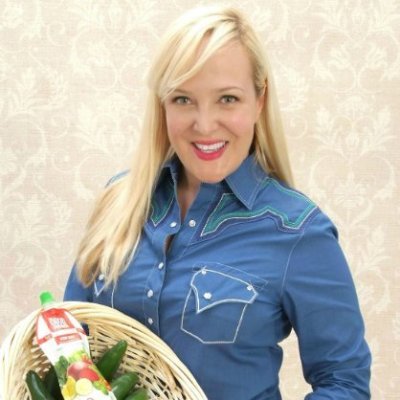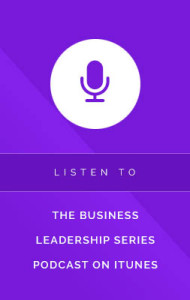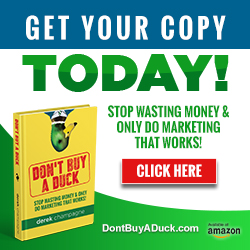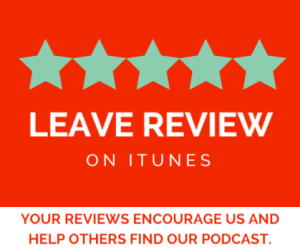BLS Interview with Karen Posada, Founder of The Good Promise, Part 1

Derek Champagne, CEO of The Artist Evolution, interviews Karen Posada. Karen is Founder of The Good Promise, a quality snack that fuels your brain and your body, leaving you feeling great.
Karen talks with Derek about the challenges and lessons learned while boot strapping her startup from a $50,000 family investment to being nationwide in less than 2 years.
Karen also talks about the lessons the market taught her about making product and price point adjustments and her experience on ABC’s hit TV show Shark Tank.
Part 1
Derek: Welcome to the Business Leadership Series, where our goal is to inspire you to become the best leader that you can be. I’m your host, Derek Champagne. Our guest today is Karen Posada, she is a Food & Tech Entrepreneur, making folks happier and healthier with each bite and click and she is the founder of The Good Promise and Animeals Inc. Karen, welcome to the show today.
Karen: Hey Derek, thanks so much for having me.
Derek: So some of you may have seen Karen recently on ABC’s Shark Tank. We really want to reach out and hear more about your entrepreneurial journey. So why don’t you start at the beginning. Tell us a little bit about where home is for you and then what got you to today, being an entrepreneur with this awesome food company?
Karen: So, it all started in 2012, it was about August of 2012. I had recently had a child, my son was two years old and my mom and I were sitting in my kitchen in Austin, Texas and she asked me, “What’s next for you?” I used to be a news reporter and I said, “You know, now that I have a kid, I can’t imagine working at 3 o’clock in the morning and doing fires and that, knowing if I’m coming back.” So I said, “I really love feeding this child great food. I think that we could possibly go into business together and make meals and sauces for kids.”
We started with a kid line and she said, “How much money do you think we’ll need?” and I said, “I think we can get by with $50,000.” She said, “Okay, do you think we’re going to make that money back?” and I said, “I think so. I think we can.” We didn’t expect it to be bigger business, I thought it was just going to be a very local type of business. I said, “I know about 2,000 moms”, I was part of all these mom groups and I said, “Maybe I’ll deliver the meals. We’ll make these gourmet type of meals and I think we can make our money back. It’s not going to be too much of an investment per say.”
So we started with the $50,000 and I was very conservative because it was half my money, half my mom’s money. We started making the meals and dropping them, then I rented a kitchen and we were doing everything by hand and every meal was costing us $12 and we were selling them for six. So I thought, “Okay, we’re going to have to expand a little bit more. This isn’t quite working.” By the time we had dropped them off and the gas and all those great things, it didn’t quite work out. So I said, “Let’s take what has worked out of this” and this was fairly quickly. We started in August, we incorporated in August, then we were ready, kind of out there by the end of the year. I said, “I think that we can incorporate everything that we have done so far. Make a great pasta sauce, add a ton of the vegetables that we’ve been adding to our meals and try to sell a pasta sauce.” She said, “Okay, I think we have enough capital to do that.”
So we created a sort of mock up and being in Austin, we went to Whole Foods but Whole Foods hated the idea. I mean hated it, they absolutely loathed the idea and I had a buyer at the time who was interested – and I was so green, I was so, so green in terms of the business world. I sent her an email, saying, “Here’s my product” and Whole Foods has this program that you can literally go store to store and each store manager can make decisions for that store and decide what goes into their stores. So I did just that, I went store to store and bugged and nagged all these buyers. Most of them said yes but then I had to get the approval of the head buyer.
So this head buyer thought, “You know, I just think it’s a really silly idea that you’re segmenting the pasta sauce towards the kids’ section.” She sent a mass email to all the buyers, saying, “Do not buy from her” and this was like three months into our business. Heartbroken and devastated, I started researching and trying to see, “Okay, if Whole Foods is not going to be my client- I need somebody big because here we are, we’ve invested all this capital. We have all these samples; I need to sell it to someone that can get it to a lot of people.”
So I started doing a lot of research and I found out Walmart was doing a sort of women-led entrepreneur thing and they were really trying to support women companies and they were wanting to get into healthier products. I thought, “If I just submit my product through the internet like everybody else does, I’m never going to hear from them. But actually, later on I learned that’s wrong. Walmart’s the only one that truly does answer to every single person that submits but I thought, “I’m going to talk to somebody that has a decision maker.” So I researched and I thought, “Who do I have a connection with? Who could possibly understand what we’re doing and get it?”
So I emailed – not emailed but I researched all the execs and then I found that Matt Kirchner was into recyclables, into forward thinking, into woman owned companies, into small companies and I thought, “You know what, I’m going to email him and ask him if there’s any chance he can guide me in the right direction. As to who the buyer may be for this product and if there’s any interest.” So I emailed them on a Friday, like around 2 o’clock in the afternoon and he emailed Friday at 4:30 PM. And he said, “Connecting you to the buyer, think this is a great idea. Come on over to Bentonville.” I thought, “Oh my God” and this is after getting like completely killed-
Derek: The Whole Foods experience and then getting a response from Walmart that quickly.
Karen: Within seconds, it was like-
Derek: That must have been a pretty amazing feeling.
Karen: It made me feel validated because here we are starting a business and here, a huge giant says, “Your idea’s terrible, what have you been thinking?” and I’m thinking to myself, “Now I’ve got to call my mom and say we’ve just spent $50,000 and everyone thinks it’s terrible” but then Walmart said, “No, we think it’s the most amazing idea.” So literally, Matt emailed me back. Within 40, the buyer had emailed me and I had a meeting for May of the following year – this was like December of 2012, I had a meeting for May of 2013 in headquarters. This was my first real meeting with anyone and I drove to Bentonville because we were out of funds and I was nervous that my sauces would pop and I just wanted it to be perfect; which is a terrible idea because driving from Austin to Bentonville at night. There’s no lights anywhere, this was a really bad idea.
So I had barely slept because I was so nervous and you’re walking into- you sort of go through- driving into the Walmart world and there’s nothing, then it’s like Pleasantville. It’s beautiful.
You drive through and you’re like, “This is out of a movie” and I’m taking pictures of all the Sam Walton streets and I was very, very excited. My meeting was at 9 o’clock in the morning, I got there 30 minutes earlier and I was so nervous. Being from the journalism, broadcast area, I barely ever get nervous but I was really, really nervous. By the time my buyer came in, I was shaking, I could barely speak. She was like, “So what did you do before this?”, I’m like, “Um, I was a news reporter.” She was like, “What? It doesn’t seem like you were” but she was super kind and just tried the product and everything that she was opening it and trying it and she was like, “This is delicious, this is amazing and it’s for moms.” And then she said, “How many stores do you want to be in? Do you want to launch in 300? Do you want to launch in 500? Do you want a thousand? I mean, we have 5,000 stores.”
I thought I was going to faint because here I am, I went from literally having nothing in the bank, by this point we had drained our bank accounts and here’s Walmart saying, “What do you want? We’ll do anything that you want to do.” I think I started crying, I was so excited and I said I thought- just thinking in my head quickly and trying to make numbers, I was thinking, “How much do we have in credit? We can borrow at least maybe 80 grand, based on our credit.” Now I was thinking, “Well, how often do you guys pay?” and she was like, “We pay 30 to 90 days but for you because you’re new and we want to help you.” I mean, this is what’s so awesome about Walmart, they actually want to help you and she said, “We’ll pay you in seven days from the product being delivered.” Which was perfect because I thought we could borrow the money, they’d pay us really quickly, we could pay back the money and hopefully be great.
So I said, “I think we can do 300 stores and she said, “Where do you want the stores?” and this is where I went wrong. This is where I went so wrong at not knowing because I had researched the internet and I was like, “Has anyone dealt with Walmart? What are the questions? What should you answer?” I didn’t research enough, I couldn’t – I didn’t- there’s no information to be found. I didn’t research enough in terms of thinking, “What store should I be in? Where am I producing my product? How much is it going to cost me to get it there?” I didn’t think about all those things. I just thought, “It’s Walmart, maybe put me in five stores everywhere, across the country. Just to see which ones are going to sell the best.”
She did warn me at that time and she said, “Your retail price is high” but being brand new, I thought, “But we have the best ingredients. We have all organic and I think the consumer will respond to really great ingredients.” She was kind and I wish she had not been as kind and told me, “You’re wrong. The consumer wants good ingredients but they’re not willing to pay your retail price.” I wish at that moment she would not have been as supportive and kind but been a little firmer because we were still in a place where we could have made some changes but it wasn’t her responsibility. It was my responsibility to research that type of stuff, so now I know and that’s why I’m sharing it with you. So if anyone else out there wants to do something similar, you know they now know that price matters. It doesn’t matter if you have the best product in the world.
Derek: So what is your advice? What should you have done?
Karen: I should have maybe gone to store to store and spoken to the managers and said, “What does your consumer buy here? What is the most they will spend on a product like mine? I had this pasta sauce, they most likely would have told me a dollar 99. They’re not going to spend anymore, they’re just not. They’re used to – their DNA goes for the cheapest price and I would have possibly done a smaller packaging. I would have maybe gone all natural, still with high quality ingredients. I would have made a couple of things differently, I would have made some changes so we were priced competitively. Because here you have the world, right; Walmart’s giving you literally the world and you’re coming in with a price that it doesn’t matter how much Walmart’s going to help you, the consumer just doesn’t get and they will not, they just won’t do it. So you’re setting yourself up for failure.
So she gave us 300 stores nationwide and I think our first purchase order was like $89,000. It was insane, it was like we went from having nothing to $89,000 but here came the freight right? [laughs] Here was my second mistake, I was like, “We’re going to make like 12,000- 15,000 dollars!” Then all of a sudden, the carriers were like, “Not so much, you’re going to give it all to us.” So we made a second mistake thinking we should branch out nationwide. We should have stayed – and we were producing the product in New York because that’s where we found the only place that could make the high quality of ingredients and actually was the cheapest place, even though the New York price was so expensive and they made a really good, quality product. We should have stayed just in New York, where they were producing the product and had 200, 300 stores just in that area, so our freight wouldn’t have eaten up all our profits.
But we were spread out across the country, so then we launched. I think we launched October of 2013, so everything happened so, so quickly and you’re looking at retailing – Walmart has this product management system called Retail Link where you can see minute by minute how your product is moving. It’s like watching the stock market, you can see where people bought, in what stores and a lot of data, you can find. And you’re looking at it and you’re like, “It’s not moving, it’s not selling.” So you’re – you go from being like, “Oh my God, this is amazing, I have a deal with Walmart!” to, “Oh, I don’t want to let my buyer down, she gave – she entrusted so much in me and here I am.”
So being entrepreneurs, I sat with my mom and I said, “Here we are”, she said, “Why isn’t the product moving?” and I thought, “Well, I guess we’ve got to spend some more money marketing. Maybe let’s go to the stores that are under performing.” So we decided to take a road trip to see what was happening, were we placed too – like were we not at eye level placement? If we added some displays, would that help? So what was great about my buyer is that she was really open to communication. So I emailed her, I think three months into launching and I said, “Our numbers are not what we thought they were going to be. What can we do to help?” She was like, “I am open to any suggestions” and I said, “Will you allow us to place displays?” and she goes, “Absolutely but you’re going to have to go store to store and talk to the managers because even though we allow you, the managers still have the right to say what they want in their stores.”
So we drove through South Carolina, North Carolina from Texas, putting displays, talking to consumers and doing whatever we could for marketing with very little funds. I should have – and I kept resonating in my mind, thinking, “It doesn’t matter how much marketing you do, if the price is not right – they will buy when they’re in front of you but if the price is not competitive, when you’re gone they’re not going to buy.” So she then said, “What else can we do to help you be successful?” this was a year into being together in business and we had sold a lot, right? But we had not – but it wasn’t up to the expectations of Walmart, it wasn’t up to – we weren’t making enough money to- every time we produced inventory, we had to put so much out and it wasn’t coming back fast enough.
A year into it, she says, “What can we do to help you? We want to grow with you, tell us. The displays didn’t work, what else will work?” So I said, “Well maybe bring me back to Texas and take me out of all these stores around the country and bring me to the 500 stores in Texas.” Which she did, which was again, no other retailer- now with the experience that I have and I’ve dealt with several other retailers, no one else will do that. Walmart is truly – I mean, to me, they were just- it was a most amazing, best experience that I’ve ever had. Then she brought me back to Texas and again, found the price was too high but we were making – it cost us almost $3 dollars to make, we were selling it to Walmart just a little bit more than that and Walmart was selling it for just a little bit more than that.
So by the time it got to the consumer, it was $4.99 and they weren’t buying it. So we started putting the product on sale and whenever the product was on a flash sale from a store that it was exiting, it was going like crazy at $1.99. So it just kept proving to me that the price, the ideal price for a product like that, the consumer was willing to pay a dollar 99. At this point, we had gotten some traction because the fact that you have Walmart behind you is very attractive to people. I said, “If we keep going down the pasta sauce business, we’re going to get into a whole lot of trouble because we can’t just bring the price down. There’s just no way, unless I put just water in there.” I didn’t have the volume to make it work and met with Walmart again.
I said, “We’re going to launch a line of juices and these are going to be priced at $1.99 to $1.49. I’ve heard you loud and clear public, you’re not willing to spend a lot of money and we want to give you a quality product but this time we’re going to be really smart about it.” So one of the main issues we had with our pasta sauces was we couldn’t do anything online because every time it shipped, it would break by the time it got somewhere. It was too heavy to ship, it was too expensive, so if they’re not willing to pay $4.99 for just a pasta sauce, they’re definitely not going to pay 20 bucks to ship the package to you, right? So we thought, we have to do something different. We introduced the new product as part of the “Made in America” and we were featured in the Wall Street Journal.
Walmart absolutely loved it and then right after that, we were accepted into Shark Tank, as you saw, which ended up being a complete nightmare and with the new product, we had AGP- oh no and then we met with gas stations, we’ve met with Valero and Valero loved them and everybody sort of – the experience that I was having now with this different product at a different price point, was completely different. Before, with the pasta sauces, I would get people being, “We like you, we like the idea of the product but the price is just too much.” They just – it was a hard sell and here we have a new product and we thought, “This could possibly change things around” but again, we went with a product with a lot of vegetables and the products that were really expensive to make, we actually pushed to the side. And now we’re focusing on the products that the consumers have had the biggest liking to.
After we met with Walmart, we thought – and they loved the product and they wanted to feature it but I thought this time. “Just because it may work for them and they work for you, it doesn’t mean it’s going to work for the public. Is the public going to see it, where is it going to be placed? I don’t want to make the same mistake again.” So I actually met with Sam’s Club and I said, “We want to do road shows. Only in California.” The reason we chose only California is because our online sales had been mostly from California and in the road shows, we can determine truly what the demand is going to be per store because the road shows with Sam’s are about 11 days. And if they’re successful enough, I think this product sells best, bulk. They said, “Yes, we love it.” So we are now in the process of finalizing all the paperwork with Sam’s and it looks like our first road show will be at the end of May, early June. So yes, I’ve learned a whole lot.



